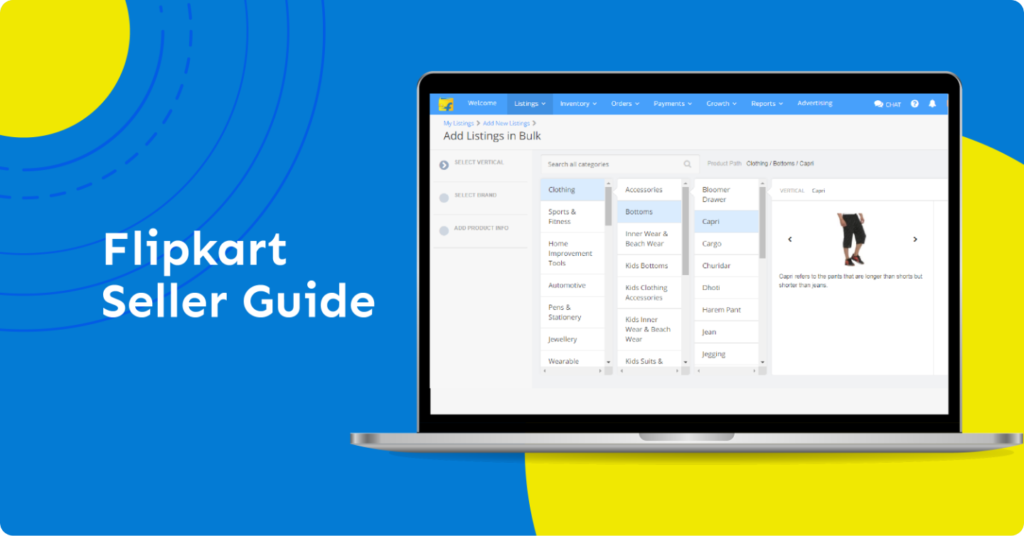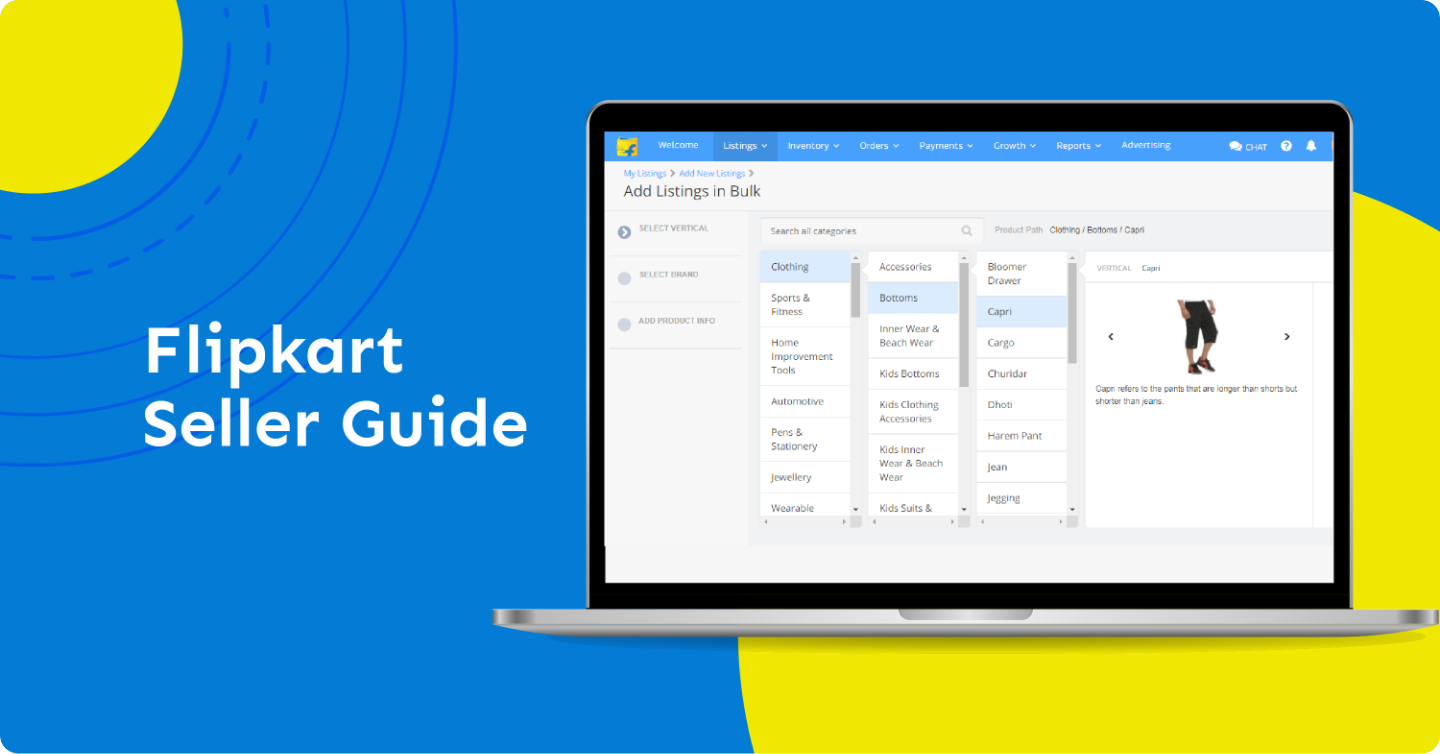
In the bustling world of e-commerce, Flipkart stands as a prominent platform offering immense opportunities for aspiring entrepreneurs. With millions of active users and a diverse range of products, becoming a seller on Flipkart can open doors to significant growth and success. If you’re eager to embark on this journey, you’ve come to the right place. In this comprehensive guide, we’ll delve into every aspect of how to become a seller on Flipkart, from registration to managing your seller account and beyond.
Table of Contents
ToggleHow to Become a Seller on Flipkart
Becoming a seller on Flipkart is a straightforward process, designed to empower individuals and businesses to showcase their products to a vast audience. Follow these steps to kickstart your journey as a Flipkart seller:
- Sign Up for a Flipkart Seller Account: Visit the Flipkart Seller Registration page and click on the “Register” button. Provide essential details such as your business name, email address, contact information, and GST registration number (if applicable). Follow the on-screen instructions to complete the registration process.
- Complete Verification: Once you’ve submitted your registration details, Flipkart will review your application. You may be required to verify your identity and provide additional documentation, such as business licenses or tax certificates. Ensure that all information provided is accurate and up-to-date to expedite the verification process.
- Set Up Your Seller Profile: After verification, log in to your Flipkart Seller Account and proceed to set up your seller profile. Add comprehensive information about your business, including a brief description, logo, and contact details. A well-curated seller profile enhances your credibility and trustworthiness among potential buyers.
- List Your Products: With your seller account set up, it’s time to list your products on Flipkart. Navigate to the “Add Products” section in the Seller Dashboard and follow the prompts to create product listings. Provide detailed descriptions, high-quality images, and accurate specifications to attract buyers and boost sales.
- Manage Orders and Inventory: As orders start rolling in, efficiently manage your inventory and fulfill customer orders on time. Utilize Flipkart’s Seller Dashboard to track order status, update inventory levels, and process shipments seamlessly. Timely order fulfillment is key to maintaining customer satisfaction and earning positive reviews.
- Optimize Your Listings: Stand out from the competition by optimizing your product listings for search visibility and conversion. Incorporate relevant keywords, compelling product descriptions, and eye-catching images to capture the attention of potential buyers. Regularly monitor and update your listings to reflect any changes or promotions.
- Provide Excellent Customer Service: Prioritize customer satisfaction by promptly responding to queries, addressing concerns, and resolving issues. Maintain open communication with buyers throughout the purchasing process and ensure hassle-free returns and refunds when necessary. Positive customer experiences lead to repeat business and word-of-mouth referrals.
- Monitor Performance Metrics: Keep a close eye on your seller performance metrics to gauge your success on Flipkart. Track metrics such as seller ratings, order defect rate, and late shipment rate to identify areas for improvement. Strive to maintain high performance standards to enhance your visibility and credibility on the platform.
- Stay Updated with Flipkart Policies: Familiarize yourself with Flipkart’s seller policies, guidelines, and terms of service to ensure compliance at all times. Stay informed about any updates or changes implemented by Flipkart and adjust your selling strategies accordingly. Adhering to Flipkart’s policies is essential for maintaining a positive seller reputation.
- Continuous Improvement and Growth: Embrace a culture of continuous improvement and innovation to thrive as a Flipkart seller. Analyze market trends, gather customer feedback, and explore new product opportunities to expand your product catalog. Leverage Flipkart’s seller tools and resources to optimize your operations and scale your business effectively.
How to Raise a Ticket on Flipkart Seller Support
Encountering issues or seeking assistance as a Flipkart seller is not uncommon, but the platform provides robust support to address your concerns promptly. Follow these steps to raise a ticket on Flipkart Seller Support:
- Log in to Your Flipkart Seller Account: Access your Flipkart Seller Dashboard using your credentials.
- Navigate to Seller Support: Look for the “Help” or “Support” section within the Seller Dashboard.
- Select the Issue Category: Choose the appropriate category that best describes your issue, such as Orders, Listings, Payments, or Account Settings.
- Provide Details: Describe your issue in detail, including relevant order IDs, product listings, or any error messages encountered. Attach screenshots if necessary to provide clarity.
- Submit the Ticket: Once you’ve filled out the required information, submit the ticket to Flipkart Seller Support.
- Follow Up: Keep an eye on your registered email address or the Seller Dashboard for updates on your ticket. Flipkart’s support team will work to resolve your issue as quickly as possible.
How to Check Seller Details on Flipkart
As a buyer or fellow seller on Flipkart, accessing seller details can help verify credibility and build trust in transactions. Follow these steps to check seller details on Flipkart:
- Product Listing Page: Navigate to the product listing page of the item you’re interested in purchasing.
- Seller Information Section: Look for the “Sold By” or “Seller Information” section on the product page. Click on the seller’s name or profile picture to view their seller details.
- View Seller Profile: Clicking on the seller’s name will redirect you to their seller profile, where you can find information such as seller ratings, reviews, and contact details.
Amazon vs. Flipkart: Which is Best for Sellers?
Both Amazon and Flipkart are leading e-commerce platforms in India, each offering unique advantages for sellers. Here’s a comparison to help you decide:
- Market Reach: Both platforms boast millions of active users, providing sellers with access to a vast customer base. However, Amazon has a global presence, while Flipkart primarily focuses on the Indian market.
- Fulfillment Options: Amazon’s Fulfillment by Amazon (FBA) and Flipkart’s Fulfillment by Flipkart (FBF) offer similar services, including storage, packaging, and shipping. Sellers can choose the fulfillment option that best suits their needs.
- Seller Support: Both Amazon and Flipkart provide robust seller support systems to address queries and concerns. Flipkart’s dedicated seller support team offers personalized assistance, while Amazon offers extensive seller resources and documentation.
- Seller Fees: The fee structures may vary between Amazon and Flipkart, including referral fees, fulfillment fees, and subscription charges. Sellers should compare the fee structures to determine which platform offers better value for their business.
- Platform Policies: Amazon and Flipkart have their own set of seller policies, guidelines, and terms of service. Sellers should familiarize themselves with these policies to ensure compliance and avoid penalties.
Ultimately, the choice between Amazon and Flipkart depends on your business goals, target audience, and product offerings. Many sellers opt to sell on both platforms to maximize their reach and sales potential.
How to Contact Flipkart Seller Support
If you encounter any issues or require assistance as a Flipkart seller, reaching out to you.
Flipkart Seller Support is quick and easy. Here’s how you can contact them:
- Seller Support Helpline: Flipkart provides a dedicated helpline for sellers to address urgent queries and issues. You can find the contact number in the Seller Dashboard or on the Flipkart Seller Support page. Have your seller details and relevant information ready before calling for efficient assistance.
- Email Support: Another option to reach Flipkart Seller Support is through email. Compose a detailed message outlining your query or concern and send it to the designated email address provided by Flipkart. Be sure to include your seller ID and any relevant order or listing details for quicker resolution.
- Live Chat: Some sellers may have access to live chat support within the Flipkart Seller Dashboard. Check if this option is available to you and initiate a chat session with a support representative. Live chat offers real-time assistance and can be convenient for resolving immediate issues.
- Raise a Ticket Online: As mentioned earlier, you can raise a ticket directly through the Flipkart Seller Dashboard. Simply navigate to the Help or Support section, choose the appropriate category for your issue, and submit a ticket with all relevant details. Flipkart’s support team will review your ticket and respond accordingly.
- Social Media Channels: Flipkart may also offer support through its official social media channels, such as Twitter or Facebook. Check if Flipkart has dedicated accounts for seller support inquiries and send a direct message outlining your issue. Social media support can sometimes provide quick responses and resolutions.
- Community Forums: Engage with other sellers and Flipkart staff members on Flipkart’s community forums. While primarily a platform for peer-to-peer support, Flipkart representatives may also participate in discussions and provide assistance when needed. Explore existing threads or start a new discussion to seek help from the community.
Flipkart Seller Login and Seller Hub
Once you’ve become a registered seller on Flipkart, accessing your seller account and utilizing the Seller Hub are essential for managing your business efficiently. Here’s how to navigate through Flipkart’s seller tools:
- Flipkart Seller Login: Visit the Flipkart Seller Portal and log in using your registered email address and password. Alternatively, you can use the Flipkart Seller App for mobile access to your seller account. Bookmark the login page for quick access in the future.
- Seller Dashboard: Upon logging in, you’ll be directed to the Seller Dashboard, your central hub for managing orders, listings, inventory, and performance metrics. Familiarize yourself with the various sections and features available in the Seller Dashboard to streamline your operations.
- Seller Hub: The Seller Hub is a comprehensive toolkit provided by Flipkart to empower sellers with actionable insights and resources. Explore features such as sales analytics, inventory management tools, promotional campaigns, and seller support options within the Seller Hub.
- Shopsy Flipkart Seller Login: If you’re a seller on Shopsy, Flipkart’s social commerce platform, access your seller account through the Shopsy Seller Portal. Log in using your Shopsy seller credentials and navigate through the seller tools and resources available specifically for Shopsy sellers.
- Flipkart Seller Central: Flipkart Seller Central is the overarching platform where sellers manage their accounts and access various seller tools and resources. Whether you’re a new seller or an experienced one, Flipkart Seller Central serves as your gateway to success on the platform.
Conclusion
Becoming a seller on Flipkart opens doors to vast opportunities in the ever-growing e-commerce landscape. By following the steps outlined in this guide and leveraging Flipkart’s seller tools and support resources, you can establish a successful presence on the platform and drive your business towards growth and prosperity. Stay proactive, adapt to market trends, and prioritize customer satisfaction to unlock the full potential of selling on Flipkart. Start your journey today and embark on the path to entrepreneurial success with Flipkart.
To become a successful Flipkart seller, the first step is to navigate to the seller dashboard through the Flipkart seller login. This seller dashboard, also known as seller central Flipkart, serves as the control center for managing inventory, processing orders, and monitoring performance. Once logged in, sellers can utilize various features such as inventory management tools and performance analytics to optimize their selling strategy. In case of any issues or queries, sellers can easily raise a ticket on Flipkart seller platform, ensuring timely resolution and seamless operations. Whether it’s accessing flipkart seller login dashboard or understanding how to become a Flipkart seller, mastering the seller central login process lays the foundation for a successful selling journey on Flipkart’s platform.
If you’re looking for Flipkart seller account management services, or flipkart seller dashboard login look no further. Our account management service provides comprehensive support for sellers navigating the complexities of the Flipkart platform. From optimizing product listings to handling customer inquiries, we ensure that your seller dashboard is effectively managed to drive sales and maximize profitability. Our team is well-versed in seller central Flipkart operations, including raising tickets and resolving issues promptly. Whether you’re a new seller looking to establish a presence on Flipkart or an experienced seller aiming to streamline your operations, our account management service offers the expertise and assistance you need to succeed in the competitive world of e-commerce. Trust us to handle your Flipkart seller login, seller dashboard management, and seller central login, allowing you to focus on growing your business and achieving your goals.










